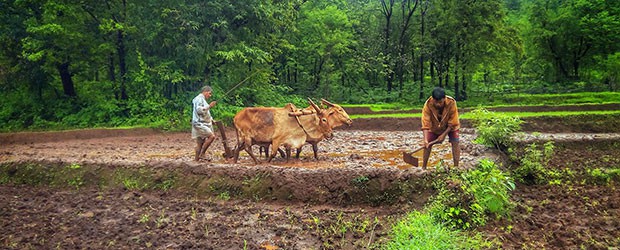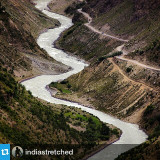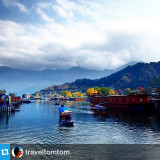Random image from our India photo collection

Assam
History
Very little is known about the early history of Assam. This region was known to have trade links with China in 100 B.C. The Periplus of the Erythrean Sea and Ptolemy’s Geography also acknowledge the existence of this state before Christ.
The Australoids or the pre-Dravidians were the earliest inhabitants of Assam. But, it was the Mongoloids who entered the land through the eastern mountainous passes and overrun the land long before the time of the compilation of the Hindu religious literature known as the Vedas. In the Vedic literature, the state has been mentioned as the land of Kirats with Pragjyotishpur as the capital.
Huen Tsang, the great Chinese traveler, visited this region in the 7th century. At that point of time, Pragjyotishpur was known as Kamrup, which was then a strong kingdom under King Bhaskaravarman. However, after this there was a gradual decline of this region and in the centuries to come brought about reduced power of the kingdom and led to its fragmentation. It was a time when no single power could hold control in Assam.
The Ahoms entered Assam crossing the eastern hills in 1228. The local tribes, the Chutias and the Kacharis could only put up a little resistance against the Ahoms.
The entry of Ahoms in Assam started a new beginning, and many scholars say that the state was named after this dynasty that ruled it for six centuries. With the coming of the Ahoms, the center of power shifted from Kamrup in Lower Assam to Sibsagar in Upper Assam.
The Mughal Empire was at its peak during this time and they took upon the challenge of crushing the Ahoms. They attacked the state 17 times. The last war was fought near the (present-day) Saraighat Bridge over the river Brahmaputra in Guwahati. In this war, the Ahoms crushed the Mughals under the leadership of the clever general Lachit Barphukan.
The next centuries spelled troubles for this kingdom. This was the time when the Burmese attacked this state and annexed them into their empire. However, they could not control the region for long, and in 1826 the British forced them to surrender Assam by the Treaty of Yandaboo.
Along with the rest of India, Assam also played an important role in the war of India’s independence. It was declared a state under the Union of India after it achieved independence in 1947. At that time the whole of the Northeast region except Manipur and Tripura was called Assam. However, due to strong regional distinctions, all of them had to be made separate states, starting with Nagaland in 1963 and ending with Arunachal Pradesh in 1972.
Go back
The Australoids or the pre-Dravidians were the earliest inhabitants of Assam. But, it was the Mongoloids who entered the land through the eastern mountainous passes and overrun the land long before the time of the compilation of the Hindu religious literature known as the Vedas. In the Vedic literature, the state has been mentioned as the land of Kirats with Pragjyotishpur as the capital.
Huen Tsang, the great Chinese traveler, visited this region in the 7th century. At that point of time, Pragjyotishpur was known as Kamrup, which was then a strong kingdom under King Bhaskaravarman. However, after this there was a gradual decline of this region and in the centuries to come brought about reduced power of the kingdom and led to its fragmentation. It was a time when no single power could hold control in Assam.
The Ahoms entered Assam crossing the eastern hills in 1228. The local tribes, the Chutias and the Kacharis could only put up a little resistance against the Ahoms.
The entry of Ahoms in Assam started a new beginning, and many scholars say that the state was named after this dynasty that ruled it for six centuries. With the coming of the Ahoms, the center of power shifted from Kamrup in Lower Assam to Sibsagar in Upper Assam.
The Mughal Empire was at its peak during this time and they took upon the challenge of crushing the Ahoms. They attacked the state 17 times. The last war was fought near the (present-day) Saraighat Bridge over the river Brahmaputra in Guwahati. In this war, the Ahoms crushed the Mughals under the leadership of the clever general Lachit Barphukan.
The next centuries spelled troubles for this kingdom. This was the time when the Burmese attacked this state and annexed them into their empire. However, they could not control the region for long, and in 1826 the British forced them to surrender Assam by the Treaty of Yandaboo.
Along with the rest of India, Assam also played an important role in the war of India’s independence. It was declared a state under the Union of India after it achieved independence in 1947. At that time the whole of the Northeast region except Manipur and Tripura was called Assam. However, due to strong regional distinctions, all of them had to be made separate states, starting with Nagaland in 1963 and ending with Arunachal Pradesh in 1972.
Go back









